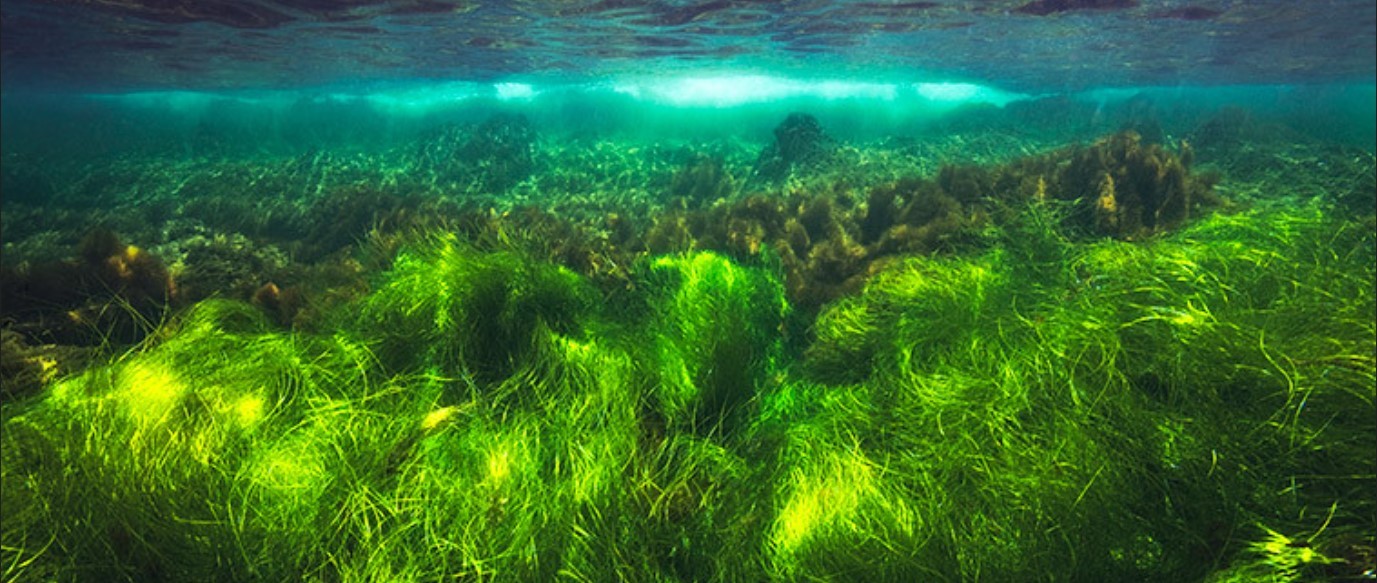Seagrass Planting Bids: Scotland's Coastal Nature Restoration Efforts

Table of Contents
The Importance of Seagrass Restoration in Scotland
Seagrass beds are often called the "lungs of the ocean" for their crucial role in marine ecosystems. Their restoration is paramount to Scotland's coastal health and overall environmental wellbeing. These underwater meadows provide a multitude of vital ecosystem services:
-
Significant carbon sink capabilities: Seagrasses are incredibly effective at sequestering carbon dioxide, surpassing even rainforests in some instances. They play a significant role in mitigating climate change by absorbing atmospheric CO2 and storing it in their sediments. Recent studies estimate that seagrass meadows can store carbon at a rate up to 35 times faster than tropical rainforests.
-
Habitat for numerous fish and invertebrate species: Seagrass beds provide critical nursery habitats for a wide variety of commercially important fish species, shellfish, and invertebrates. This biodiversity supports a thriving food web, crucial for maintaining healthy marine populations.
-
Natural coastal defence: The dense root systems of seagrass meadows help stabilize sediments, reducing erosion and protecting valuable coastlines from the impacts of storms and waves. This natural coastal protection is a cost-effective alternative to man-made structures.
-
Improved water quality: Seagrass acts as a natural filter, improving water clarity and reducing pollution by trapping sediments and absorbing excess nutrients. This leads to healthier water conditions for all marine life.
Scotland has sadly experienced significant seagrass loss in recent decades due to human activities like pollution and coastal development. However, the potential for restoration is substantial, offering a remarkable opportunity to revitalize our coastal ecosystems and contribute to a sustainable future.
The Seagrass Planting Bid Process in Scotland
Securing funding for seagrass restoration projects requires a robust and competitive seagrass planting bid. The process generally involves submitting detailed proposals to various funding bodies, including:
-
Government grants: The Scottish Government and its agencies offer various environmental grants specifically targeting marine conservation and habitat restoration.
-
Environmental trusts: Several charitable organizations and environmental trusts dedicate resources to supporting projects that enhance biodiversity and protect coastal ecosystems. These trusts often prioritize community-led initiatives.
Successful bids typically meet several key criteria:
-
Feasibility: A clear and realistic plan for planting, including site selection, methodology, and timelines.
-
Environmental Impact Assessment: A thorough assessment of potential environmental impacts, both positive and negative, demonstrating a commitment to sustainable practices.
-
Community Involvement: Demonstrating local support and engagement, highlighting the community benefits and opportunities for participation.
Funded projects range from large-scale planting initiatives spearheaded by government agencies and research institutions to smaller, community-led projects focused on specific coastal areas. Examples of successful projects already underway include… (insert examples of successful projects in Scotland here). The competitive nature of the bidding process emphasizes the need for well-researched, compelling proposals that clearly articulate the project's objectives, methodology, and expected outcomes.
Funding Opportunities for Seagrass Planting Projects
Several key funding sources are available for ambitious seagrass planting projects in Scotland:
-
Specific government programs: (List specific government programs and their websites here. Examples might include funding streams under the Scottish Government's Nature Restoration Fund or similar initiatives).
-
Environmental funds: (List specific environmental funds and their websites here. Examples might include the National Lottery Heritage Fund or other relevant trusts).
-
Private sector involvement: Increasingly, private companies are investing in environmental restoration projects through corporate social responsibility (CSR) initiatives. This offers significant potential for collaborative bids, leveraging both public and private funding.
Collaborative bids, involving partnerships between research institutions, NGOs, community groups, and the private sector, are highly encouraged and often more successful in securing funding.
Challenges and Opportunities in Seagrass Restoration
While the benefits of seagrass restoration are substantial, several challenges need to be addressed:
-
Suitable locations: Identifying suitable locations for planting that possess the appropriate environmental conditions is crucial for successful establishment and long-term survival.
-
Climate change impacts: Rising sea temperatures, ocean acidification, and changes in storm patterns pose significant threats to seagrass health and survival.
-
Monitoring: Ongoing monitoring is essential to track the success of planting efforts, identify any potential issues, and adjust management strategies as needed.
Pollution from agricultural runoff, sewage, and industrial discharges remains a major threat to seagrass health. Human activities like dredging and boat anchoring can also cause significant damage. Long-term monitoring and maintenance are crucial for ensuring the survival and growth of replanted seagrass meadows. Technological advancements, such as drone surveys for monitoring and innovative planting techniques, are increasingly aiding restoration efforts.
The long-term economic and societal benefits of successful seagrass restoration are significant. Restored seagrass meadows can support thriving fisheries, creating economic opportunities for local communities. They also enhance the potential for ecotourism, attracting visitors and generating revenue.
Conclusion
Seagrass planting bids are playing a vital role in Scotland's ambitious coastal nature restoration efforts. These projects offer a unique opportunity to revitalize valuable coastal ecosystems, mitigate climate change, and bolster the economy. The ecological and economic benefits are undeniable. Continued investment and support for these vital projects are crucial to ensure the long-term success of seagrass restoration in Scotland. Learn more about how you can support or participate in seagrass planting bids and contribute to Scotland's coastal ecosystem restoration. Consider submitting your own seagrass planting bid and be part of this crucial environmental initiative. Find out more about funding opportunities for seagrass restoration projects in Scotland today!

Featured Posts
-
 Formula 1s Worldwide Expansion Credit To Ceo Stefano Domenicali
May 05, 2025
Formula 1s Worldwide Expansion Credit To Ceo Stefano Domenicali
May 05, 2025 -
 Nhl Playoffs Fridays Crucial Games And Standings Implications
May 05, 2025
Nhl Playoffs Fridays Crucial Games And Standings Implications
May 05, 2025 -
 Super Bowl 2025 Bradley Cooper And Daughter Leas Adorable Matching Green Jackets
May 05, 2025
Super Bowl 2025 Bradley Cooper And Daughter Leas Adorable Matching Green Jackets
May 05, 2025 -
 Bakoles Ibf Eliminator Loss Analysis Of Parker Fight And Ajagba Implications
May 05, 2025
Bakoles Ibf Eliminator Loss Analysis Of Parker Fight And Ajagba Implications
May 05, 2025 -
 Koncert Gibonnija U Puli Gdje Kupiti Ulaznice
May 05, 2025
Koncert Gibonnija U Puli Gdje Kupiti Ulaznice
May 05, 2025
